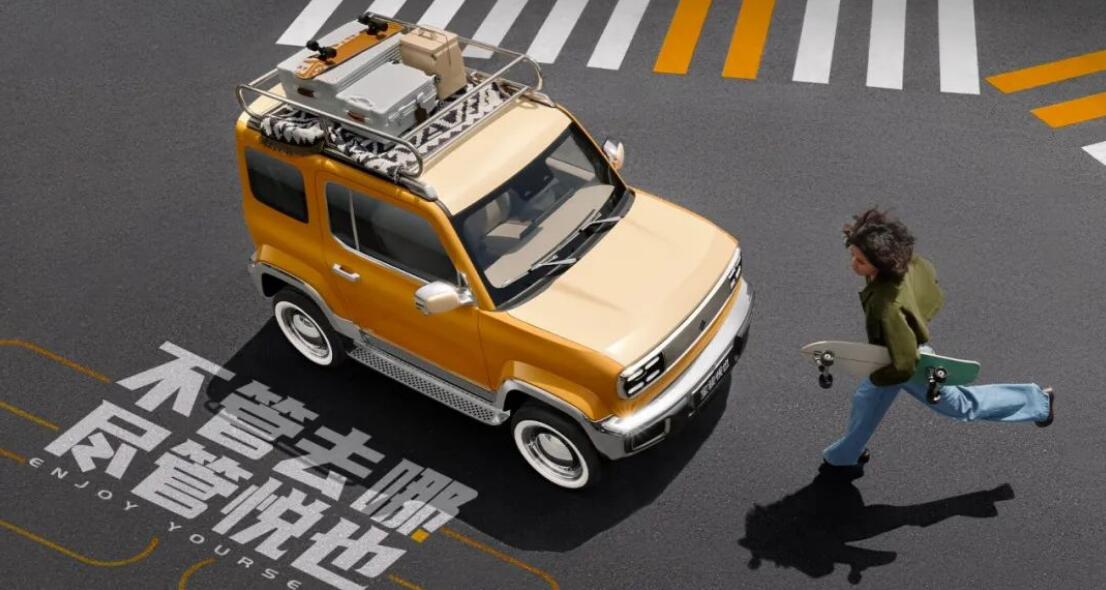The Baojun Yep is available in two versions, with the pricier one equipped with a smart driving system developed by SAIC-GM-Wuling with drone maker DJI.

(Image credit: SAIC-GM-Wuling)
SAIC-GM-Wuling today officially launched its new electric vehicle (EV), the Yep, the latest addition to its line of mini EVs.
The Yep is available under SAIC-GM-Wuling's Baojun brand in two versions, starting at RMB 79,800 ($11,290) and RMB 89,800 respectively.
The Baojun Yep looks somewhat similar to the Suzuki Jimny, and SAIC-GM-Wuling said the model uses the Square Box design language to target the needs of younger customers.

The length, width and height of the Baojun Yep are 3,381 mm, 1,685 mm and 1,721 mm respectively, with a wheelbase of 2,110 mm.
For comparison, the Hongguang Mini EV, another SAIC-GM-Wuling model, measures 3,059 mm in length, 1,521 mm in width and 1,614 mm in height, with a wheelbase of 2,010 mm.
The Baojun Yep is powered by a permanent magnet synchronous motor with a peak power of 50 kW and a peak torque of 140 Nm.
The model has a battery pack capacity of 28.1 kWh and a CLTC range of 303 km.
It supports fast charging and can go from 30 percent to 80 percent in 35 minutes.

The Baojun Yep with a starting price of RMB 89,800 is equipped with the Lingxi intelligent driving system announced in August 2022 by SAIC-GM-Wuling and DJI Automotive, the automotive division of drone manufacturer DJI.
The system is based on SAIC-GM-Wuling's "Emotion Engine" concept, which focuses on urban mobility scenarios, SAIC-GM-Wuling previously said.
The Lingxi intelligent driving system takes advantage of DJI's technological strengths in the field of binocular cameras and is based on the latter's algorithms in the field of vision perception and experience in vision perception systems for drones.
SAIC-GM-Wuling's 2023 Baojun KiWi EV is the first model to use the system.
Equipped with the Lingxi system, the Baojun Yep allows users to turn on intelligent driving with a single click, enabling functions including obstacle recognition and response, and intelligent speed regulation in curves.
The model is also equipped with smart parking assist, which enables full-scene automatic parking.

Baojun previewed the model on May 9, when it also shared images and a video of the two-door pickup version of the Yep.
SAIC-GM-Wuling is a joint venture between SAIC Group, General Motors and Liuzhou Wuling Automobile, headquartered in Liuzhou, Guangxi Zhuang Autonomous Region in southwestern China.
It sells vehicles based on the GSEV (Global Small Electric Vehicle) architecture in China, including the Mini EV, KiWi EV, Nano EV, and Air EV. In addition to these pure electric models, SAIC-GM-Wuling also sells fuel-powered SUVs, MPVs, and vans.
In the small EV segment, in addition to the hot-selling Mini EV, SAIC-GM-Wuling launched the mini EV Air EV in China last December and the Binguo EV at the end of March this year.
Notably, SAIC-GM-Wuling has seen a decline in NEV sales so far this year, while other major NEV makers in China have seen sales growth.
In January-April, SAIC-GM-Wuling's NEV retail sales were 111,604 units, down 15.9 percent from 132,658 units in the same period last year, according to data from the China Passenger Car Association (CPCA).
As a comparison, BYD saw sales increase 81.3 percent year-on-year to 702,608 units and Tesla China grew 61.5 percent year-on-year to 177,385 units during this period.
In an effort to boost sales growth, SAIC-GM-Wuling began allowing consumers to pay only for the body and rent the battery when purchasing the Mini EV on May 11, lowering the purchase threshold to RMB 19,800.
On May 22, SAIC-GM-Wuling announced a price cut of up to RMB 13,000 for the Hongguang Mini EV family, saying the move was in response to China's call to promote NEV consumption in rural areas.
($1 = RMB 7.0692)
The post SAIC-GM-Wuling launches new mini EV Yep, prices start at $11,290 appeared first on CnEVPost.
For more articles, please visit CnEVPost.


















